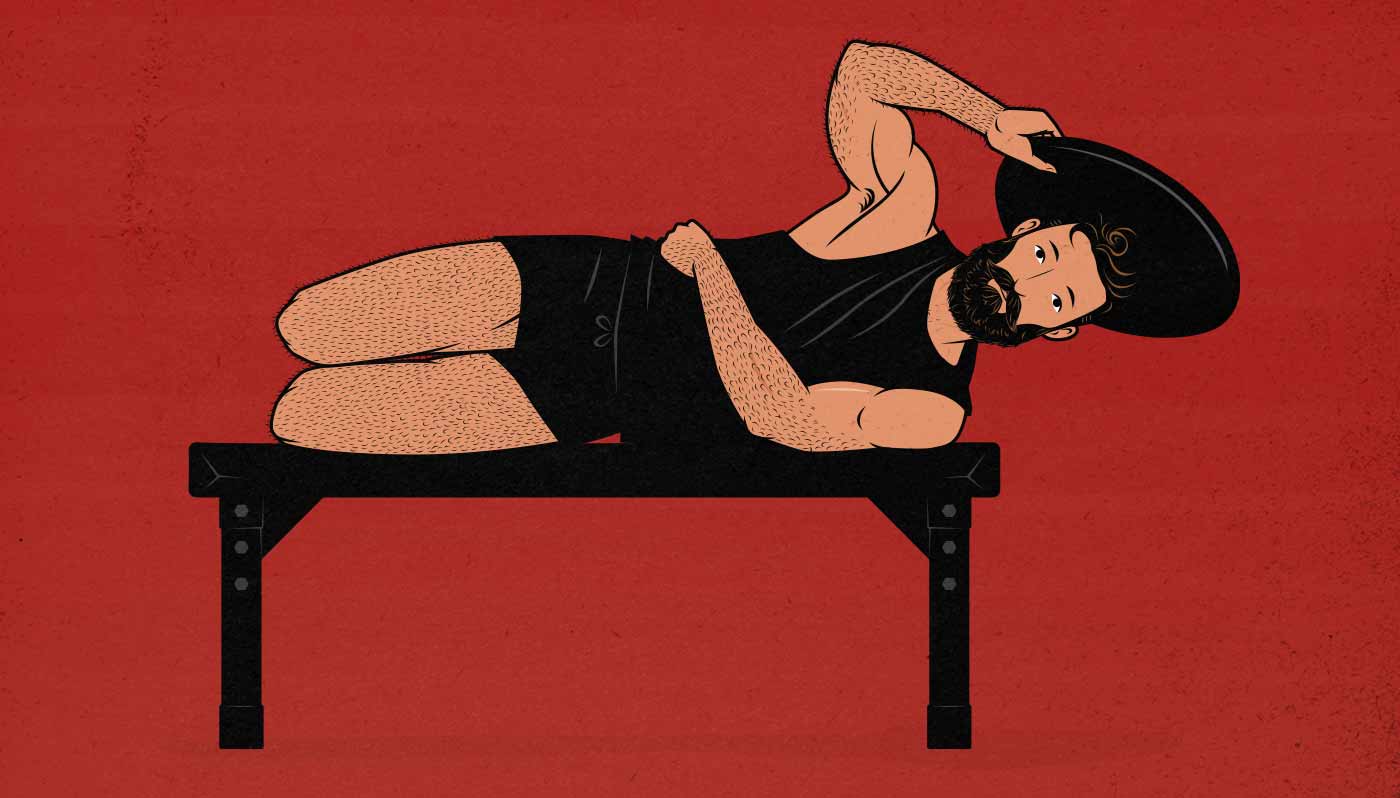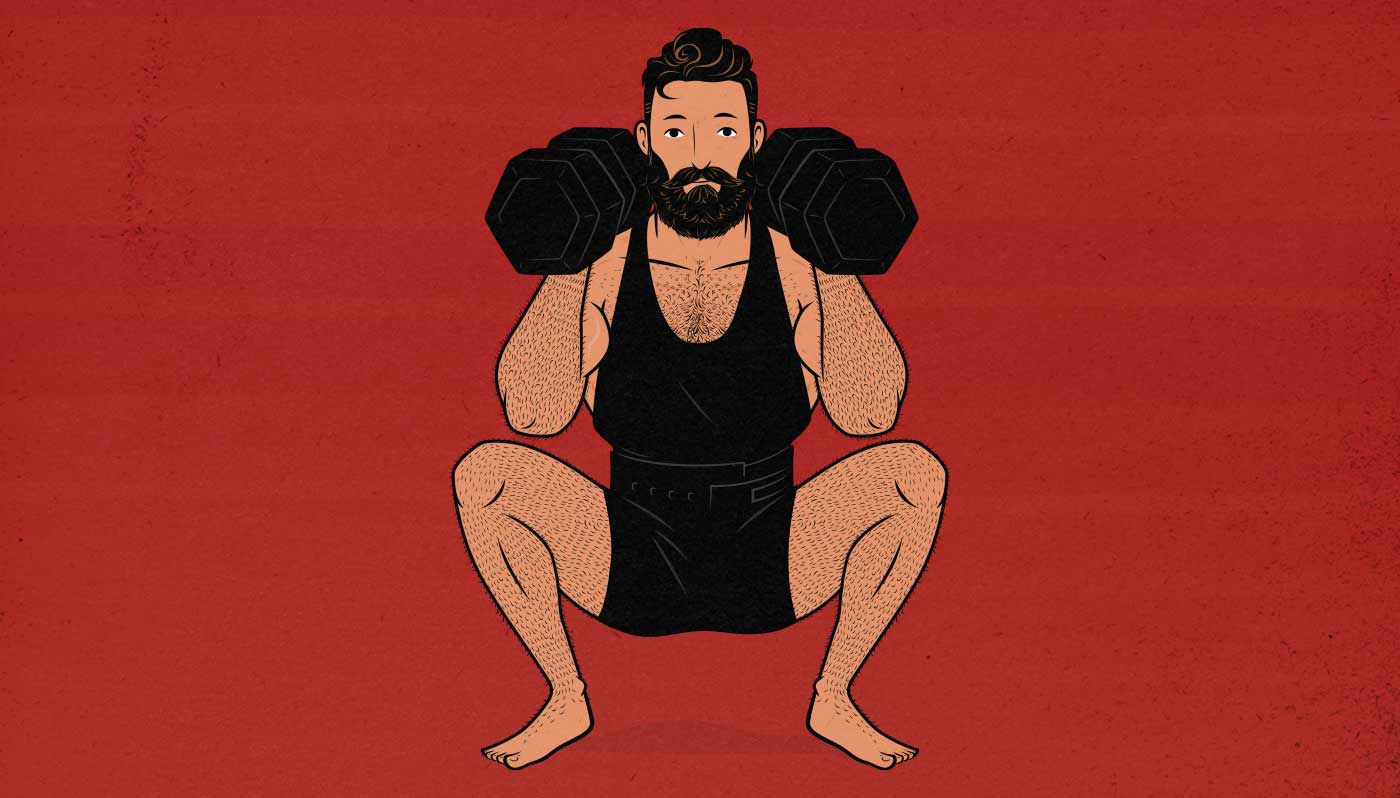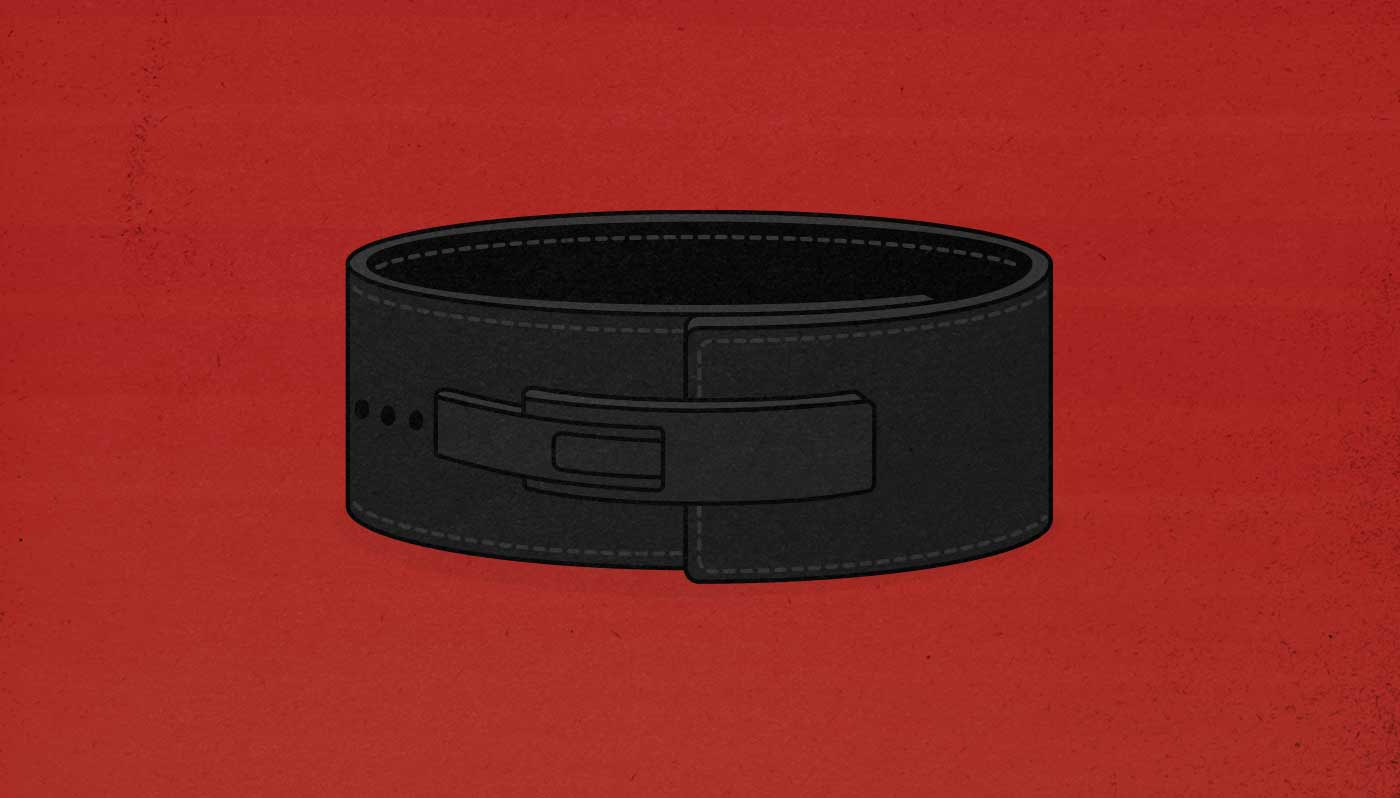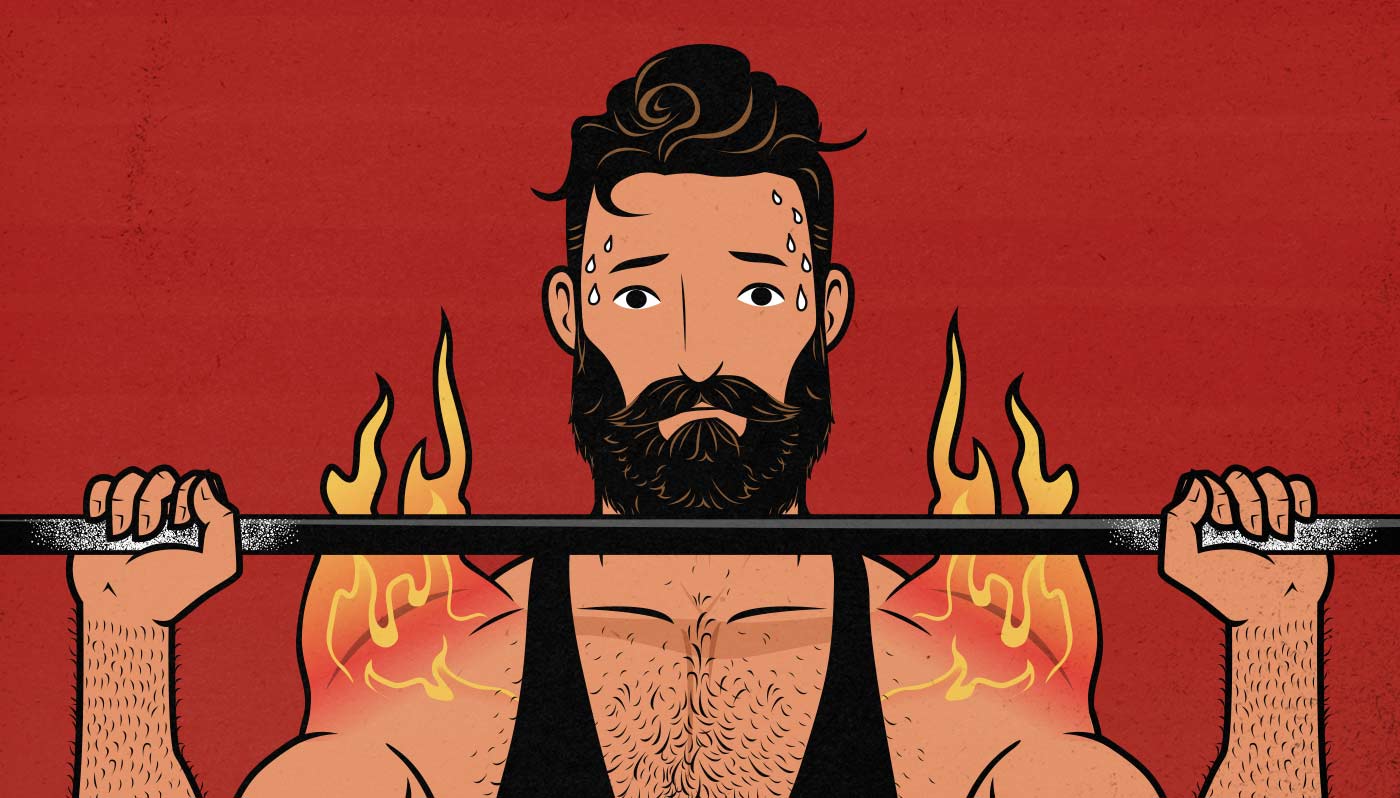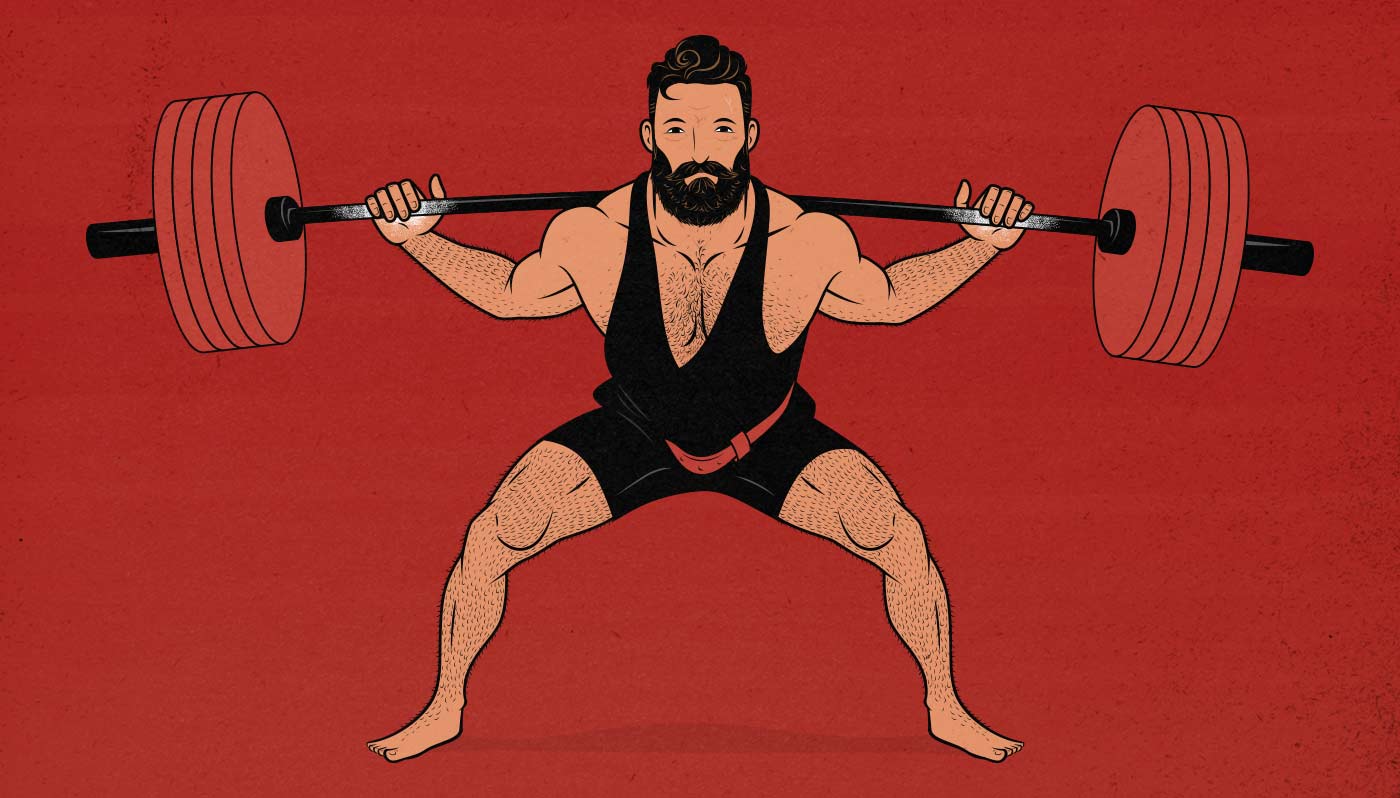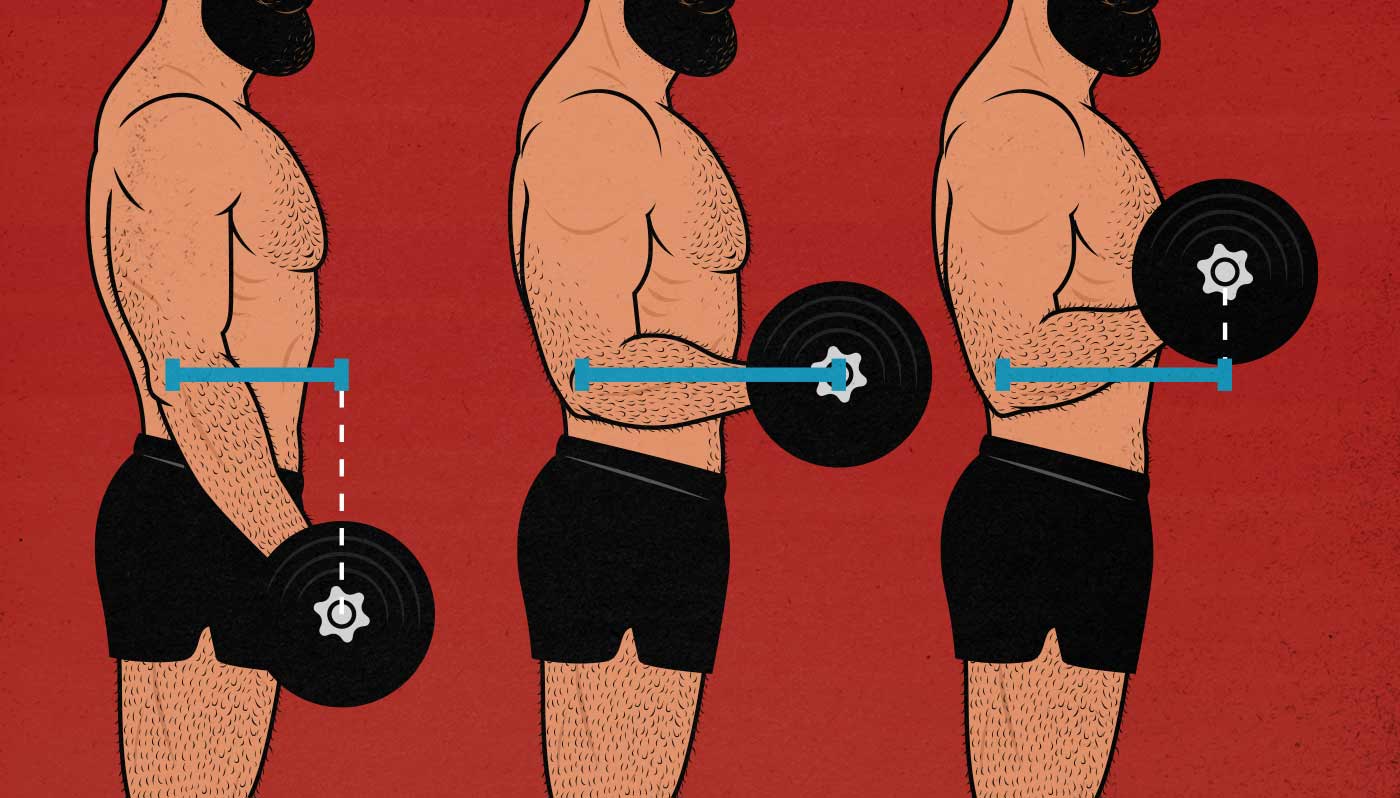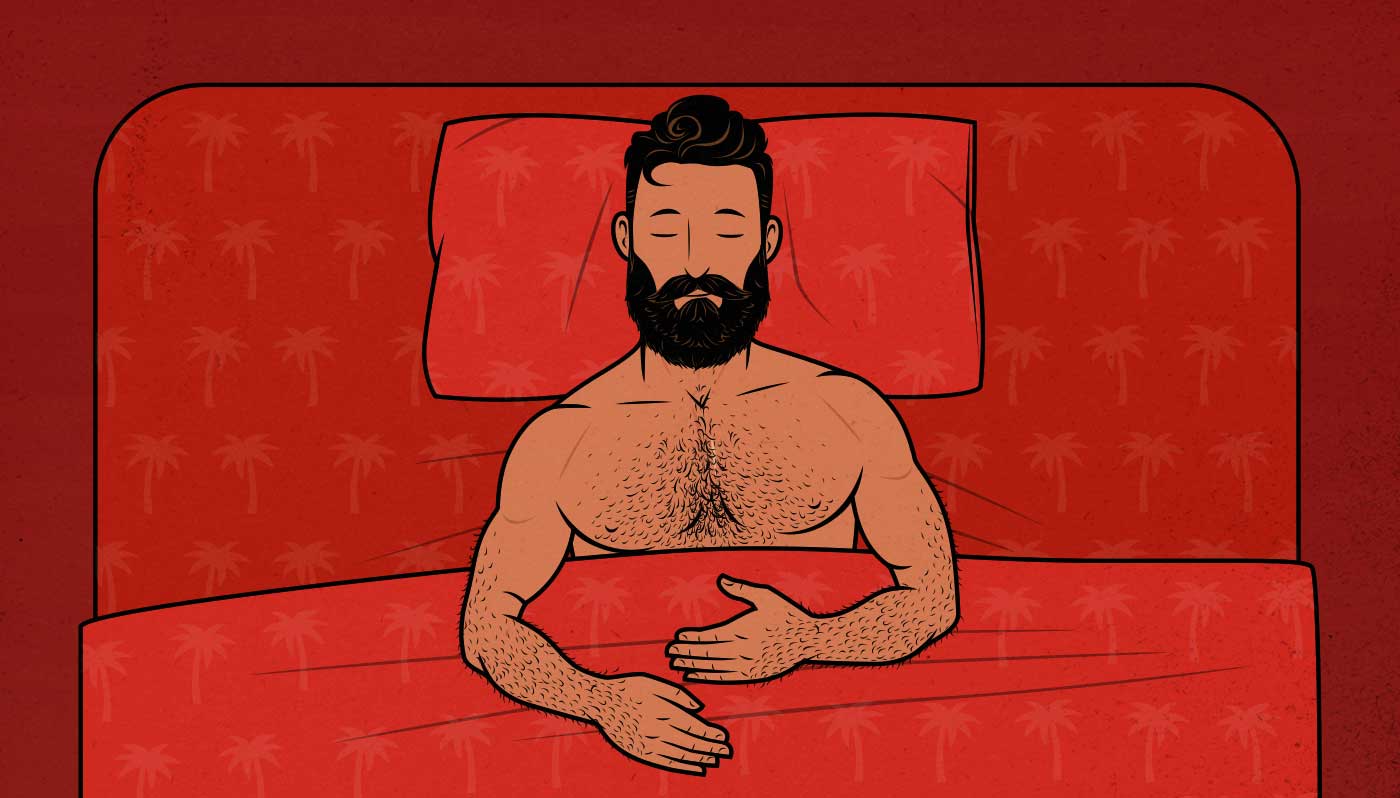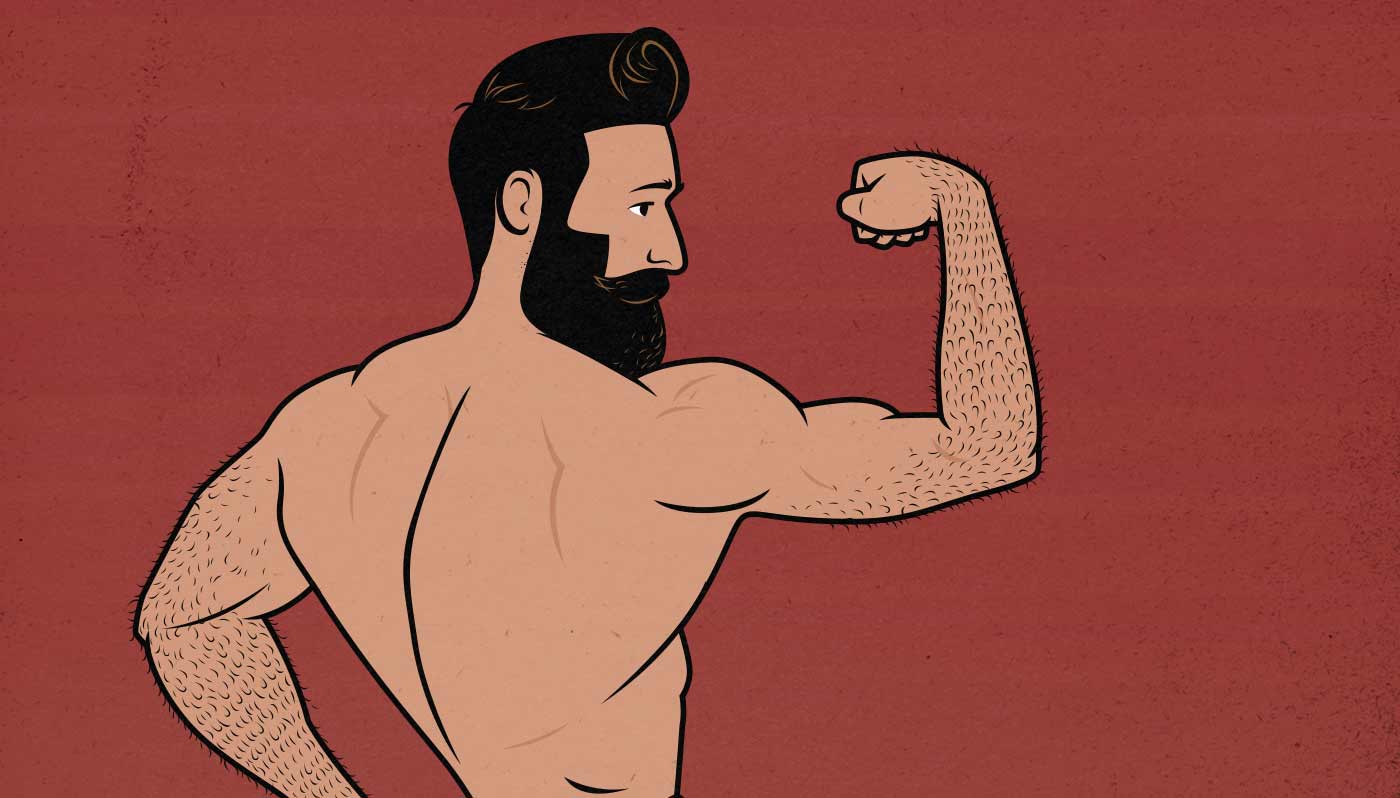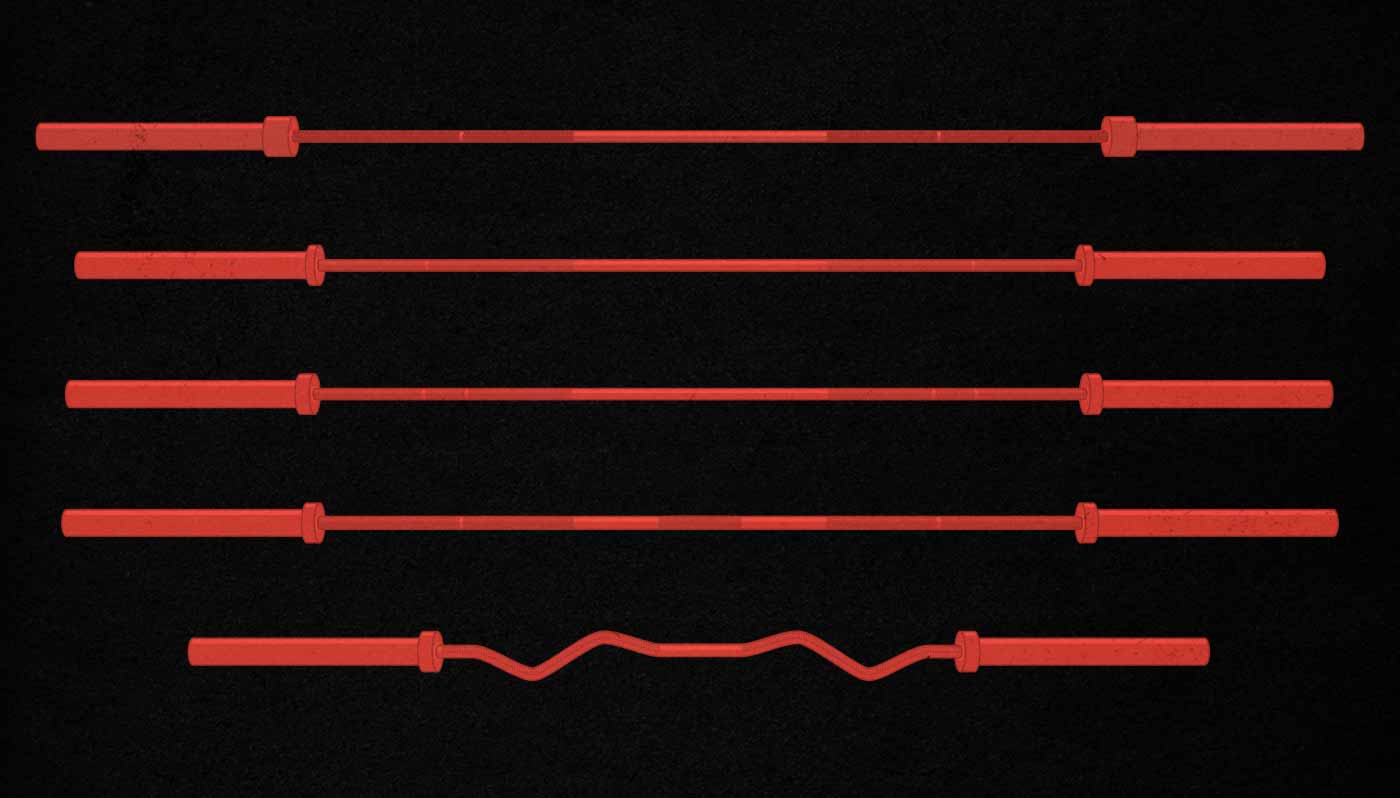Articles
Should You Do Isolation Lifts to Build Muscle?
Isolation lifts, also known as accessory or single-joint exercises, are smaller lifts that are designed to “isolate” certain muscles. It’s a bit of a misnomer. No exercise works just a single muscle group, but isolation lifts can certainly be quite effective at emphasizing certain muscle groups. For example, the barbell bench press is used to gain size and strength in the chest, shoulders, and triceps, whereas the skull crusher is used to emphasize the triceps.
There are two popular ways of training for muscle growth. The first style of training is a descendant of strength training, and it focuses heavily—often exclusively—on the big compound lifts. These are the programs built around the squat, bench press, and deadlift, often with some overhead pressing and barbell rowing added in afterwards. We see this in programs like Starting Strength and StrongLifts 5×5, as well as a number of other popular programs that claim to be good for gaining both size and strength.
The second style of training is popular among casual bodybuilders, and it focuses more heavily on isolation lifts, sometimes at the cost of compound lifts. This is the style of training where people might use the leg press as their main lower-body movement, but will also be doing leg extensions, hamstring curls, and calf raises.
The more popular opinion is that compound lifts are better at stimulating muscle growth, and in a general sense, that’s true—they stimulate more overall muscle growth. But for many of the muscles in our bodies, isolation lifts are better. In fact, some muscles are only stimulated by isolation lifts.
Delve into the detailsAre Dumbbells or Barbells Better for Building Muscle?
Both barbells and dumbbells are great for gaining size and strength. However, they aren’t quite the same thing. Each of them has their own strengths and weaknesses.
For example, the barbell bench press is the most famous lift for building up our chests, and with good reason—it’s the heaviest, and it does the best job of building our triceps and shoulders alongside our pecs. But if we’re trying to build a stubborn chest, or if we have cranky shoulders, the dumbbell bench press might be a better choice. Why is that?
Or what about when we’re doing biceps curls or overhead presses? Should we grab a barbell or some dumbbells? The barbell allows us to lift heavier, which forces our cores to work harder and our spines to grow tougher, but dumbbells allow us to lift with a freer range of motion, and they engage different stabilizer muscles.
And why are barbells so popular in strength training while dumbbells are more popular with bodybuilders? Is it because barbells are better for gaining strength in our lower bodies whereas dumbbells are better for building bigger and more symmetrical muscles?
It also helps to know the pros and cons of barbells and dumbbells so that we can decide what type of home gym we want to build. Should we build a barbell home gym in a spare room or should we get a pair of adjustable dumbbells that we can store in the closet? If we want the best results, do we need access to both?
Delve into the detailsAre Weight Lifting Belts Good for Building Muscle?
Some argue weight lifting belts help us build muscle because they allow us to lift more weight while protecting our lower backs, and there’s some truth to that. If we can lift more weight because our spines are held rigid, that can certainly help us stimulate more muscle growth.
Others argue that we shouldn’t wear weight lifting belts outside of powerlifting because they prevent us from strengthening our lower backs, abs, and obliques. That doesn’t seem to be true, but lifting belts do indeed increase intra-abdominal pressure, which isn’t necessarily a good thing for everyone. Plus, not all spinal experts recommend weight lifting belts, especially when our goal is merely to gain muscle size. So there’s some nuance here.
In this article, we’ll talk about:
- Whether weight lifting belts can help us build more muscle.
- If weight belts increase our risk of hernias, varicoceles, and hemorrhoids.
- How weight belts impact our risk of lower back injuries.
- How much stronger weight belts can make us.
- Which belts are best for building muscle.
- And how best to use them.
How Long Should You Rest Between Sets to Build Muscle?
Recently, research has been coming out showing that long rest periods between sets are best for building muscle. When you rest for longer, your muscles recover more of their strength, allowing you to lift more weight in subsequent sets. Lifting more weight means more mechanical tension and, thus, better strength gains. Because of this, most powerlifters rest for 2–5 minutes between sets.
A decade ago, short rest times were thought to be better for building muscle. Bodybuilders would rest just 30–60 seconds between sets, keeping their workouts short, their heart rates high, and revelling in their muscle pumps. They built tremendous amounts of muscle.
Both approaches can be ideal for building muscle. The trick is to build your program in a way that takes advantage of both styles of training.
Delve into the detailsHow Range of Motion Affects Muscle Growth
There are three conflicting ideas about how the range of motion we use while lifting weights affects our muscle growth:
- The first idea is that lifting with a larger range of motion means doing more work, which will then stimulate more muscle growth.
- The second idea is that keeping constant tension on our muscles throughout the set gives a better muscle pump and thus stimulates more muscle growth.
- The third idea is that doing heavy partials can strengthen our tendons and bones, allowing us to build more muscle in the longer term.
All three of these ideas seem to be true. For maximal muscle growth, we probably want to use a smart mix of at least the first two, and perhaps even the third.
Delve into the detailsHow Resistance Curves Affect Muscle Growth
If we want to make our muscles bigger, we need to challenge them enough to provoke an adaptation. How much our muscles are challenged depends on our leverage. By adjusting our leverage over the weights, we can change which muscles are being worked, how hard they’re being worked, and how hard they’re being worked relative to one another.
For example, by changing our leverage while squatting, we could:
- Lift heavier weights and engage more muscle mass.
- Emphasize either quad growth, glute growth, back growth, or aim for equal stimulation of all three muscle groups.
- Make the lift hard at one specific part of the lift, stimulating a smaller amount of muscle growth, or hard throughout the entire lift, stimulating a larger amount of muscle growth.
By understanding and min-maxing our leverage, we can improve how much muscle we build and how much strength we gain while lifting weights.
What’s kind of neat is that the word leverage has two separate meanings:
- Leverage: the exertion of force by means of a lever or an object used in the manner of a lever.
- Leverage: use (something) to maximum advantage.
Let’s talk about the first so that we can do the second.
Delve into the detailsHow Does Sleep Affect Muscle Growth & Fat Loss?
Sleep is the foundation of a good muscle-building and fat-loss routine. It gives us the drive to challenge ourselves in the gym, the appetite to eat a big muscle-building diet, and the willpower to implement new habits. But for the sake of giving sleep the credit it deserves, let’s put aside that it improves our willpower, motivation, compliance, exertion, and all of the other (super important) secondary benefits. Here’s how sleep can directly increase muscle growth and fat loss (study):
- More testosterone: getting enough sleep boosts our circulating levels of testosterone, improving our ability to gain muscle quickly and leanly.
- More insulin-like growth factor 1 (IGF-1): getting enough sleep will also raise our IGF-1 levels, allowing us to better recruit satellite cells into our muscle fibres, which is critical for overcoming size and strength plateaus.
- Less cortisol: getting enough sleep reduces chronic cortisol levels, reducing muscle breakdown and increasing muscle growth.
- Less Inflammation: getting better sleep reduces chronic inflammation, speeding up muscle repair, reducing our risk of injury, and improving our general health.
- Better nutrient partitioning: getting enough sleep makes our bodies prefer getting stored energy from fat instead of muscle, allowing for leaner muscle gains.
- More muscle growth. As we’ll cover in the introduction, optimizing our sleep has been shown to increase gains in lean mass by around 30% (while simultaneously reducing fat gain).
Given how powerful sleep is for building muscle and losing fat, it pays to approach our bedtime routines with the same fervour that we approach our workout routines and diets. If we give sleep a high priority in our lives, it won’t just improve our body composition, it will improve everything.
Here’s how to improve your sleep for faster and leaner muscle growth.
Delve into the detailsShould You Double Down on Strengths Or Bring Up Weaknesses?
In this article, let’s talk about the philosophy you should adopt while choosing your lift variations and accessories. Should you run lift with your strengths and focus on what you’re best at? Or should you address your weaknesses so that you can build a more balanced and versatile physique?
What’s interesting is that the answer changes depending on your goals. Doubling down on strengths will make you stronger, bringing up weaknesses will make you look better, and a mix of both approaches tends to be best for general health.
Delve into the detailsThe Deadlift Hypertrophy Guide
The deadlift strengthens us from our forearms down to our calves. In fact, it’s such a good indicator of overall strength that it’s the only lift in both powerlifting and strongman competitions.
For stimulating muscle growth, the deadlift is more controversial. Most casual gymgoers skip it. Many bodybuilders do, too. And it’s easy to see why. Deadlifts are hard to learn, challenging to do, and difficult to recover from. But if you do them, they’re worth it.
If you want a bigger, stronger, and better-looking body, there’s no better lift than the deadlift. It stimulates the most overall muscle growth, it develops full-body strength, and it thickens some of our most impressive muscles.
Delve into the detailsThe Barbell Buyer’s Guide (for Bodybuilding & Hypertrophy Training)
While writing our guide on how to build a barbell home gym, I dove way too deep into researching barbells. Which companies make the best barbells, which coatings do the best job of preventing rust, which type of knurling is best, and so on. Perhaps more importantly, there are several different types of barbell, all of which look fairly similar, but all of which are designed for different styles of lifting:
- Olympic weightlifting barbells are smooth, thin, and springy, designed to be tossed and dropped. This makes them great for Olympic weightlifting and CrossFit, but a poor choice for building muscle and gaining strength.
- Strength training “power” barbells are rough, hard, and thick, designed for heavy and methodical lifting.
- Multipurpose barbells are a mix of the two. They’re smooth and springy enough to catch on our shoulders but have enough grip and stiffness to use for strength training.
Most people assume that multipurpose barbells are designed for general strength training and bodybuilding, but that’s actually not the case. They’re designed for powerlifting and Olympic weightlifting—for programs like Starting Strength, which includes both the low-bar back squat (a powerlifting lift) and the power clean (an Olympic lift). It’s a barbell designed for two very specialized types of lifting.
If we’re lifting weights to gain muscle size and strength, or to improve our health and appearance, then we aren’t going to be doing Olympic weightlifting or powerlifting. And if we aren’t doing either of those styles of lifting, we sure don’t need a barbell designed for both.
So what type of barbell should we buy?
Delve into the details
